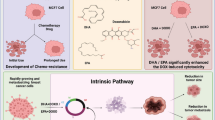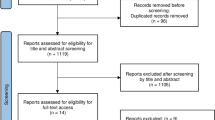Abstract
Purpose:
The aim of this study was to evaluate whether the omega-3 polyunsaturated fatty acid cis-5,8,11,14,17-eicosapentanoic acid (EPA) can enhance the radiosensitivity of different human tumor cell lines.
Materials and Methods:
Colon adenocarcinoma cells HT-29, and two glioblastoma multiforme tumor cells T98G and U251 were cultured under standard conditions. Cell growth was observed during administration with different concentrations of EPA, using it as the free fatty acid dissolved in ethanol or bound to bovine serum albumin. To investigate the influence of EPA (free and bound) on radiosensitivity, tumor cells were pretreated 30 minutes or 24 hours prior to irradiation with the fatty acid. Cell survival was measured by colony-forming assays.
Results:
When combined with irradiation, incubation with EPA was found to result in enhanced radiosensitivity with substantial variation: while there was strong radiosensitization for HT-29 and U251 cells, almost no effect for T98G cells was observed. A marked radiosensitization was clearly dependent on the treatment schedule.
Conclusion:
The observations suggest that EPA is not only a nutritional adjuvant but also may be a potential candidate to enhance the efficacy of irradiation on human cancer cells.
Zusammenfassung
Ziel:
In der vorliegenden Arbeit wurde geprüft, ob die polyungesättigte Omega-3-Fettsäure cis-5,8,11,14,17-Eicosapentaensäure (EPA) die Strahlensensibilität verschiedener humaner Tumorzelllinien erhöhen kann.
Methodik:
Zellen eines kolorektalen Adenokarzinoms (HT-29) sowie zweier Glioblastome (T98G und U251) wurden unter Standardbedingungen kultiviert. Um den Einfluss von EPA auf das Wachstum der Zellen zu ermitteln, wurden diese verschiedenen EPAKonzentrationen ausgesetzt. Dabei erfolgte die Zugabe von EPA entweder als freie Fettsäure (gelöst in Ethanol) oder gebunden an Albumin. Zur Untersuchung der Wirkung von EPA (frei und gebunden) auf die Strahlensensibilität der Tumorzellen wurden die Zellen 30 min bzw. 24 h vor der Bestrahlung mit der Fettsäure behandelt und das Zellüberleben anhand von Koloniebildungstests ermittelt.
Ergebnisse:
Die zusätzliche Behandlung der Zellen mit EPA vor der Bestrahlung resultierte in einer unterschiedlich stark ausgeprägten Erhöhung der Radiosensitivität der Tumorzellen: Während für die HT-29- and U251-Zellen eine deutliche Strahlensensibilisierung nachweisbar war, konnte bei den T98G-Zellen kein Effekt verzeichnet werden. Die Strahlensensibilisierung war abhängig vom Zeitpunkt der EPA-Zugabe.
Zusammenfassung:
Die erhaltenen Ergebnisse zeigen, dass die Omega-3-Fettsäure EPA in der Tumortherapie nicht nur als Nahrungsergänzungsmittel von Bedeutung ist, sondern möglicherweise auch zur Wirkungssteigerung der Bestrahlung auf Tumorzellen beitragen kann.
Similar content being viewed by others
References
Allred CD, Talbert DR, Southard RC, et al. PPAR gamma1 as a molecular target of eicosapentaenoic acid in human colon cancer (HT-29) cells. J Nutr 2008;138:250–6.
Argiles JM. Cancer-associated malnutrition. Eur J Oncol Nurs 2005;9(Suppl 2):S39–50.
Bathen TF, Holmgren K, Lundemo AG, et al. Omega-3 fatty acids suppress growth of SW620 human colon cancer xenografts in nude mice. Anticancer Res 2008;28:3717–23.
Barzan D, Maier P, Zeller WJ, et al. Overexpression of caveolin-1 in lymphoblastoid TK6 cells enhances proliferation after irradiation with clinically relevant doses. Strahlenther Onkol 2010;186:99–106.
Bartkowiak D, Stempfhuber M, Wiegel T, et al. Radiation- and chemoinduced multidrug resistance in colon carcinoma cells. Strahlenther Onkol 2009;185:815–20.
Baumann M, Krause M, Zips D, et al. Molecular targeting in radiotherapy of lung cancer. Lung Cancer 2004;45(Suppl 2):S187–97.
Beck SA, Smith KL, Tisdale MJ. Anticachectic and antitumor effect of eicosapentaenoic acid and its effect on protein turnover. Cancer Res 1991;51:6089–93.
Black HS, Rhodes LE. The potential of omega-3 fatty acids in the prevention of non-melanoma skin cancer. Cancer Detect Prev 2006;30:224–32.
Bougnoux P. N-3 polyunsaturated fatty acids and cancer. Curr Opin Clin Nutr Metab Care 1999;2: 121–6.
Calonghi N, Cappadone C, Pagnotta E, et al. 9-hydroxystearic acid upregulates p21(WAF1) in HT29 cancer cells. Biochem Biophys Res Commun 2004;314:138–42.
Calonghi N, Pagnotta E, Parolin C, et al. Modulation of apoptotic signalling by 9-hydroxystearic acid in osteosarcoma cells. Biochim Biophys Acta Mol Cell Biol Lipids 2007;1771:139–46.
Calonghi N, Pagnotta E, Parolin C, et al. 9-hydroxystearic acid interferes with EGF signalling in a human colon adenocarcinoma. Biochem Biophys Res Commun 2006;342:585–8.
Calviello G, Palozza P, Franceschelli P, et al. Low-dose eicosapentaenoic or docosahexaenoic acid administration modifies fatty acid composition and does not affect susceptibility to oxidative stress in rat erythrocytes and tissues. Lipids 1997;32:1075–83.
Chang CT, Patel P, Kang N, et al. Eicosapentaenoic-acid-derived isoprostanes: synthesis and discovery of two major isoprostanes. Bioorg Med Chem 2008;18:5523–7.
Chapkin RS, McMurray DN, Davidson LA, et al. Bioactive dietary long-chain fatty acids: emerging mechanisms of action. Br J Nutr 2008;100:1152–7.
Cheeseman KH. Mechanisms and effects of lipid peroxidation. Mol Aspects Med 1993;14:191–7.
Chiu LC, Wan JM. Induction of apoptosis in HL-60 cells by eicosapentaenoic acid (EPA) is associated with downregulation of bcl-2 expression. Cancer Lett 1999;145:17–27.
Clarke RG, Lund EK, Latham P, et al. Effect of eicosapentaenoic acid on the proliferation and incidence of apoptosis in the colorectal cell line HT29. Lipids 1999;34:1287–95.
Colas S, Paon L, Denis F, et al. Enhanced radiosensitivity of rat autochthonous mammary tumors by dietary docosahexaenoic acid. Int J Cancer 2004;109:449–54.
Colquhoun A. Mechanisms of action of eicosapentaenoic acid in bladder cancer cells in vitro: alterations in mitochondrial metabolism, reactive oxygen species generation and apoptosis induction. J Urol 2009;181:1885–93.
Colquhoun A, Schumacher RI. gamma-linolenic acid and eicosapentaenoic acid induce modifications in mitochondrial metabolism, reactive oxygen species generation, lipid peroxidation and apoptosis in Walker 256 rat carcinosarcoma cells. Biochim Biophys Acta Mol Cell Biol Lipids 2001;1533:207–19.
Das UN. gamma-linolenic acid therapy of human gliomas – a review of in vitro, in vivo, and clinical studies. Med Sci Monitor 2007;13:RA119–31.
Dittmann K, Mayer C, Rodemann HP. Nuclear EGFR as novel therapeutic target: insights into nuclear translocation and function. Strahlenther Onkol 2010;186:1–6.
Edwards JC, Chapman D, Cramp WA, et al. The effects of ionizing radiation on biomembrane structure and function. Prog Biophys Mol Biol 1984;43:71–93.
Falconer JS, Ross JA, Fearon KCH, et al. Effect of eicosapentaenoic acid and other fatty-acids on the growth in-vitro of human pancreatic-cancer cell-lines. Br J Cancer 1994;69:826–32.
Gabrys D, Dörfler A, Yaromina A, et al. Effects of lovastatin alone or combined with irradiation on tumor cells in vitro and in vivo. Strahlenther Onkol 2008;184:48–53.
Galeotti T, Masotti L, Borrello S, et al. Oxy-radical metabolism and control of tumor-growth. Xenobiotica 1991;21:1041–51.
Haimovitz-Friedman A, Kan CC, Ehleiter D, et al. Ionizing radiation acts on cellular membranes to generate ceramide and initiate apoptosis. J Exp Med 1994;180:525–35.
Heimli H, Finstad HS, Drevon CA. Necrosis and apoptosis in lymphoma cell lines exposed to eicosapentaenoic acid and antioxidants. Lipids 2001;36:613–21.
Igarashi M, Miyazawa T. Do conjugated eicosapentaenoic acid and conjugated docosahexaenoic acid induce apoptosis via lipid peroxidation in cultured human tumor cells? Biochem Biophys Res Commun 2000;270:649–56.
Köteles GJ, Somosy Z. Radiation responses in plasma membrane. Review of the present state and future trends. Cell Mol Biol 2001;47:473–84.
Koumura T, Nakamura C, Nakagawa Y. Involvement of hydroperoxide in mitochondria in the induction of apoptosis by the eicosapentaenoic acid. Free Radic Res 2005;39:225–35.
Lai PBS, Ross JA, Fearon KCH, et al. Cell cycle arrest and induction of apoptosis in pancreatic cancer cells exposed to eicosapentaenoic acid in vitro. Br J Cancer 1996;74:1375–83.
Leyko W, Bartosz G. Membrane effects of ionizing radiation and hyperthermia. Int J Radiat Biol Relat Stud Phys Chem Med 1986;49:743–70.
Lövey J, Bereczky B, Gilly R, et al. Recombinant human erythropoietin alpha improves the efficacy of radiotherapy of a human tumor xenograft, affecting tumor cells and microvessels. Strahlenther Onkol 2008;184:1–7.
Macchia A, Varini S, Grancelli H, et al. The rationale and design of the FORomegaARD Trial: a randomized, double-blind, placebo-controlled, independent study to test the efficacy of n-3 PUFA for the maintenance of normal sinus rhythm in patients with previous atrial fibrillation. Am Heart J 2009;157:423–7.
Mahoney EM, Hamill AL, Scott WA, et al. Response of endocytosis to altered fatty acyl composition of macrophage phospholipids. Proc Natl Acad Sci U S A 1977;74:4895–9.
Marathe D, Mishra KP. Radiation-induced changes in permeability in unilamellar phospholipid liposomes. Radiat Res 2002;157:685–92.
Marnett LJ. Lipid peroxidation – DNA damage by malondialdehyde. Mutat Res-Fundam Mol Mech Mutagen 1999;424:83–95.
Marquardt F, Rödel F, Capalbo G, et al. Molecular targeted treatment and radiation therapy for rectal cancer. Strahlenther Onkol 2009;185:371–8.
Milne GL, Yin H, Morrow JD. Human biochemistry of the isoprostane pathway. J Biol Chem 2008;283:15533–7.
Nitsche M, Christiansen H, Hermann RM, et al. The combined effect of fludarabine monophosphate and radiation as well as gemcitabine and radiation on squamous carcinoma tumor cell lines in vitro. Int J Radiat Biol 2008;84:643–57.
Ojeda F, Diehl HA, Folch H. Radiation induced membrane changes and programmed cell death: possible interrelationships. Scanning Microsc 1994;3:645–51.
Riediger ND, Othman RA, Suh M, et al. A systemic review of the roles of n-3 fatty acids in health and disease. J Am Diet Assoc 2009;109:668–79.
Ross JA, Maingay JP, Fearon KC, et al. Eicosapentaenoic acid perturbs signalling via the NFkappaB transcriptional pathway in pancreatic tumour cells. Int J Oncol 2003;23:1733–8.
Schley PD, Jijon HB, Robinson LE, et al. Mechanisms of omega-3 fatty acid-induced growth inhibition in MDA-MB-231 human breast cancer cells. Breast Cancer Res Treat 2005;92:187–95.
Schonberg SA, Lundemo AG, Fladvad T, et al. Closely related colon cancer cell lines display different sensitivity to polyunsaturated fatty acids, accumulate different lipid classes and downregulate sterol regulatory elementbinding protein 1. FEBS J 2006;273:2749–65.
Schonberg SA, Rudra PK, Noding R, et al. Evidence that changes in Seglutathione peroxidase levels affect the sensitivity of human tumour cell lines to n-3 fatty acids. Carcinogenesis 1997;18:1897–904.
Stromberg JS, Lee YJ, Armour EP, et al. Lack of radiosensitization after paclitaxel treatment of 3 human carcinoma cell-lines. Cancer 1995;75: 2262–8.
Tisdale MJ. Inhibition of lipolysis and muscle protein degradation by EPA in cancer cachexia. Nutrition 1996;12:S31–3.
Vartak S, Robbins MEC, Spector AA. Polyunsaturated fatty acids increase the sensitivity of 36B10 rat astrocytoma cells to radiation-induced cell kill. Lipids 1997;32:283–92.
von Schacky C. A review of omega-3 ethyl esters for cardiovascular prevention and treatment of increased blood triglyceride levels. Vasc Health Risk Manag 2006;2:251–62.
Zhivotovsky B, Joseph B, Orrenius S. Tumor radiosensitivity and apoptosis. Exp Cell Res 1999;248:10–7.
Author information
Authors and Affiliations
Corresponding author
Rights and permissions
About this article
Cite this article
Manda, K., Kriesen, S., Hildebrandt, G. et al. Omega-3 Fatty Acid Supplementation in Cancer Therapy. Strahlenther Onkol 187, 127–134 (2011). https://doi.org/10.1007/s00066-010-2166-6
Received:
Accepted:
Published:
Issue Date:
DOI: https://doi.org/10.1007/s00066-010-2166-6




